Broiler integrators around the globe are facing a similar problem - a specific growth retardation around 3-4th week of age of broiler. This problem occurs so frequently that it is no longer considered as a disease or abnormal phenomena and is often neglected. In some cases it is treated with antibiotics and generally with whatever is readily available. In other cases ordinary acids or herbal products are used. This growth problem is caused by Sub clinical Necrotic enteritis (SNE).
The indiscriminate usage of Antibiotic Growth Promoters(AGPs) and frequent shifting of raw materials are the major influencing factors. Another strong association is the occurrence or insufficient control of coccidiosis.
GI Tract of Chicken
Intestinal health and perfect pings are the most important clinical signs of healthy broiler flocks. Managing these flocks gives a pleasure to both the poultry farmer as well the Vet & the other service personnel. However, flocks that grow without problems are very rare.
The gastro intestinal tract of poultry contains many different species/strains of bacterial flora. These act as a barrier to colonization by pathogenic bacteria. Within the gut both beneficial and pathogenic bacteria compete for nutrients, space, and intestinal attachment sites. The overall goal of a successful GI tract intervention strategy is to create a gut environment that is beneficial to the maintenance of normal bacterial flora while being detrimental to colonization by enteric pathogens.
Clostridia Infections
Poultry clostridiosis (necrotic enteritis [NE] was first recorded by Bennetts (1930) in Australia, and fully characterized by Parish (1961a, b, and c) in the United Kingdom. Now, NE emerged as a worldwide problem.
Clostridium perfringens is an ubiquitous gram positive, spore forming, and extremely prolific, oxygenic anaerobic bacterium. This is found in soil, dust, feces, feed, poultry litter and intestinal contents. The disease usually occurs in broiler chickens 2-6 weeks and in layers is seen mainly during 2 - 24 weeks. The incidence is more in broiler breeder flocks, reared in deep litter with restricted feeding programmes. These birds often eat contaminated litter material when there is no feed and get infected.
Clostridium perfringens is a normal inhabitant of the intestinal tract of chickens. The Clostridial organisms live harmlessly in the lower part of the gut especially with ceca and large intestines. The high pH and oxygen content of the healthy small intestine do not support the growth of organisms. Any condition which alters the intestinal wall vitality, favours the growth of clostridia.
Normally the number of C. perfringens in the intestine is low (about 10 4 cfu/g of digesta) but disturbances in normal intestinal microflora may cause rapid proliferation of C perfringens, increasing bacterial numbers to 10 7-10 9 cfu/g of digesta resulting in the development of clinical NE . Also, the presence of C. perfringens in poultry meat posses an important threat to public health.
Forms of Necrotic Enteritis in chickens
Three forms of Clostridial enteritis are seen throughout the world. Classical Clostridial /necrotic enteritis, Cholangiohepatitis, and Intestinal dysbacteriosis. Dysbacteriosis is a general overgrowth of the intestinal microflora, which may predispose to NE by reducing oxygen tension to a level favourable for C. perfringens proliferation
Economic Impact of Necrotic Enteritis
Outbreaks of necrotic enteritis are sporadic and may result in high mortality and severe economic losses. It has been estimated that the cost of sub-clinical necrotic enteritis can be as much as Rs. 2/- per bird.
The sub-clinical form of necrotic enteritis(SNE) may be most economically important because of impaired feed conversion, reduced live weight at slaughter and increased condemnation percentage associated with C. perfringens infection.
A typical example of sub clinical form of Necrotic enteritis affected flock, showing the following changes in performance:
(Ref: M.Kaldhusdal)
Factors influencing occurrence of Necrotic Enteritis
Dietary animal products
Animal proteins are favourable substrates for Clostridial growth, and high concentrations in broiler feeds are often associated with NE. Fish-meal exacerbates NE. There is a positive association between crude protein derived from fish-meal and numbers of ilea and caecal C. perfringens. Increased gizzard pH, stimulated by animal protein, encourages C. perfringens proliferation. Animal fat (lard or tallow) may lead to higher ilea counts of C. perfringens than does vegetable oil.
Dietary zinc
Relatively high zinc concentrations occur in wheat, meat-meal and fish-meal (National Research Council US, 1984), all of which are predisposing factors to NE.
High intestinal pH
Alkaline pH may be a predisposing factor because C. perfringens growth in vitro is inhibited at low pH and toxin production is increased at high pH.
Intestinal stasis
Cereals containing large amounts of Non Starch Polysaccharides (NSPs) increase digesta viscosity, which increases the gut passage time. This in turn may allow anaerobic bacteria to proliferate and produce enterotoxins.
Damage to the intestinal mucosa.
Damage to the mucosa facilitates proliferation of C. perfringens and toxin production. Damage might be caused by mechanical action, such as litter eating by birds or fibrous materials in litter. A healthy gizzard grinds feed so efficiently that large particles do not normally enter the duodenum. Finely ground feed cause higher mortality attributed to NE than coarsely ground feed.
Intercurrent infections
Coccidial infections stimulate proliferation of intestinal C. perfringens.
Immunosuppression
Exposure to infectious bursal disease, chick infectious anaemia virus and Marek's disease, as well as non-specific stress, may predispose birds to NE.
Climate
High prevalence of NE is seen during winter and in late summer.
Animal protein
Fish meal may be a source of C. perfringens contamination, as well as being a source of nutrients for the bacterium.
Anticlostridial drugs
Antibiotic Growth Promoters (AGPs) such as virginiamycin, bacitracin, avoparcin, avilamycin, etc. at growth promotional concentrations, cannot be relied upon to protect against NE under commercial conditions. NE may occur in broilers when drug shuttles including an Ionophore is used, even with an additional AGP.
Drug resistance.
Resistance to bacitracin, lincomycin, flavophospholipol, virginiamycin and tetracyclines is widespread.
Symptoms
NE typically occurs as outbreaks characterized by depression, ruffled feathers, diarrhoea, huddling, anorexia and, frequently, high mortality. Sub clinical cases of NE may certainly cause growth depression. ''Sticky pings'' adhering to a bird's cloaca may be a sign of NE.
The clinical symptoms of the disease remain consistent. The faeces is looser, contains more fluid, is less consistent and the colour is abnormal. The faeces is more viscous and sticky. The water / feed ratio is increased, the daily growth is reduced, and a reduction intake is also seen in most of the cases.
Observation of the nature of pings will offer a better idea of intestinal health of the chicken. One has to observe for the zone of fluid around the pings. A good pings creates no fluid zone; a Clostridial enteritis ping creates a clear, but limited zone. When viral problems or E.coli are predominant, the fluid zone is much larger. Intestinal viral diseases or coccidiosis might result in bacterial overgrowth as well.
Orange colour pings seen in Clostrial enteritis cases
Gross lesions
Lesions are seen in the jejunum, sometimes extending into the duodenum or the ileum. Typical focal lesions are sharply demarcated from the surrounding mucosa. In severe cases, lesions are longitudinally expanded along the gut, and the epithelium is eroded and detached. A diphtheritic membrane green or brownish orange may cover the intestinal mucosa (the ''Turkish towel'' effect).
The gut is friable, dilated and gas-filled, with foul-smelling brown liquid contents.
Sub-Clinical Necrotic Enteritis
Lesion score 0
0 - normal: no NE lesions, intestine has normal elasticity (rolls back on itself after being opened)
NE Lesion Score 1
1 - Mild: thin and flaccid intestinal wall (intestine remains flat when opened and doesn't roll back into normal position); thickened mucus covering mucus membrane being opened. No loss of mucosa; mild reddening or congestion of serosal blood vessels
NE Lesion Score 2
2 - Moderate: noticeable reddening and swelling of the intestinal wall; minor ulceration and necrosis of the intestine membrane; excess mucus
NE Lesion Score 3
3 - Severe: extensive area of necrosis and ulceration of the small intestine membrane; significant hemorrhage, layer of fibrin and necrotic debris on the mucus membrane (Turkish towel appearance)
NE Lesion Score 4
4 - Dead or moribund bird (bird that would likely die within 24 hours). Classical lesion of Necrotic enteritis. The entire mucosa is covered with thin layer of fibrin and necrotic debris.
Liver disease associated with NE
Various types of liver lesions associated with NE have been observed at slaughter. Commonly seen is Cholangio hepatitis. It is the common type of liver lesion seen in NE. The livers are enlarged, and may have a yellow brown colour discoloration. The surface is smooth and even.
Prevention and Control Strategies of NE
Following are a few strategies available:
Litter management
An adequate depth of material with good absorptive capacity is essential. Leaking drinkers must be avoided, and litter moisture kept down to 20% to 25%.
Pelleting
All the above strains are spore forming and thus resistant to heat and harsh environmental conditions. Most strains survive short-term temperature increases up to 80˚C. Pelleting feed is not sufficient to destroy
spores. Even more extreme treatments like extraction of soybeans with hexane and the toasting of the soybean meal, or preparing meat in an oven are not sufficiently effective to kill all spores. Because of this, feed can be an important source of infection.
Managemental strategies
When developing new management strategies, only one factor should be changed at a time. Obviously incompatible factors should be avoided; for example, the simultaneous use of a probiotic and an antibacterial drug, or of an in-feed anticoccidial drug and a drug-sensitive vaccine. Testing feed ingredients for spore contamination and checking pings for the ''fluid zone'' area may be useful for monitoring management programs.
Nutritional Management
Raw materials that predispose birds to NE should be reduced if possible. Animal protein, particularly fish-meal, should be omitted from or included at low levels in poultry diets, since this may be a source of C. perfringens contamination.
Probiotics and competitive exclusion products
Maintenance of a stable gut flora is essential to prevent Necrotic Enteritis. This objective may be achieved with probiotics or competitive exclusion products (CEPs). ''A probiotic is a preparation of viable micro-organisms which is consumed by humans or other animals with the aim of inducing beneficial effects by qualitatively or quantitatively influencing their gut microflora and/or modifying their immune status''. (Fuller 2004)
Probiotics in Animal Health
Gut Health
It is essential to maintain a healthy intestinal microflora by suppressing the pathogenic bacteria and promoting the beneficial bacteria.. Good gut health is closely linked to the normal ecological equilibrium of the gastrointestinal microflora.
This is determined by lactic acid bacteria, Lactobacillus and Bifidobacteriaceae which represent about 55% of the total intestinal flora. Rods (Gram -ve) from species such as Bacterioides, Fusobacterium, and Eubacterium comprise about 44% of the total microflora. The remaining organisms are pathogens: a). 1% consisting of E. coli & Enterococcus and b) < 0.01% of different Gram +ve and Gram -ve bacteria such as Staphylococcus, Pseudomonas, Clostridia, Campylobacter, Chlamydia and Proteus.
Active Microbials
To maintain the equilibrium, the presence of wide range of different microorganisms in the GI tract is very important. Direct manipulation of the microbial population can be one of nutritional strategies to achieve this. The addition of direct fed microbial provides essential support in suppressing pathogenic bacteria while promoting beneficial bacteria for gut health maintenance.
Kemin has developed CloSTATTM , an Active Microbial containing, the proprietary strain of Bacillus subtilis PB6 that was developed as nutritional solution to maintain intestinal microflora balance. gut integrity as well as to improve animal performance.
The Effect of CloSTATTM on Gut Microflora
In vitro and in vivo research studies confirm that CloSTATTM , can reduce the population of pathogenic bacteria such as Clostridium Perfringens while maintaining the growth of beneficial bacteria such as Lactobacilli and Bifidobacterium.
The effect of Bacillus subtilis PB6 on Clostridium perfringens is through: (a) disruption of cell wall and loss of cytoplasmic contents into the exterior and (b) rupture and death of the cell. This mode of action of CloSTAT TM is achieved by production of Surfactins, which have the killing effect on Clostridium perfringens. CloSTATTM also produces one another metabolite, which selectively promotes he growth of commensals.
Effect of CloSTATTM on the consistency of pings
Compatibility of CloSTAT (Bacillus subtilis PB6) with acids, antibiotics and coccidiostats
Effect of CloSTATTM on growth performance
Research studies in New Zealand and China have shown a positive effect on weight gain, feed conversion, reduction in mortality rate and subsequently improved the European Efficiency Factor at the end of trial.
The following trial conducted by Kemin India in a commercial farm, clearly indicates the positive growth performance of CloSTATTM.
Summary:
In today's scenario of narrow margin, high volume broiler and layer business, the disease determinants associated with the production environment are the ones which ultimately decide the turning point of the flocks' performance. Flock health, more specifically gut health, remains the most important contributor to optimal performance. CloSTATTM , effectively does the job to achieve the above standard performance.
CloSTATTM has beneficial effects on the gut health of broilers by encouraging growth of beneficial bacteria such as lactic acid bacteria while reducing the ileal count of Clostridium organism. This can help in maintaining intestinal microflora balance .
CloSTATTM improves the performance parameters as compared to AGP treatment group and control group. This suggests the recommendation of CloSTATTM for optimal production performance of birds. CloSTATTM , an active microbial can be used as a replacement for AGP.
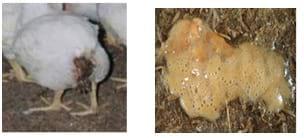
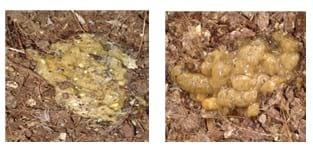
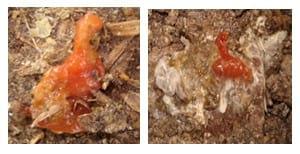


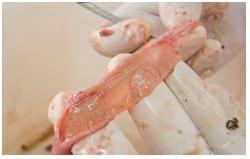

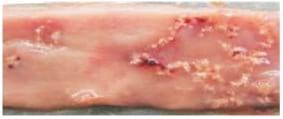
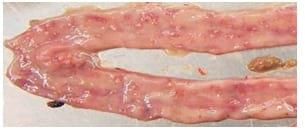

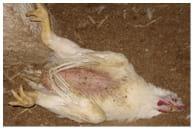
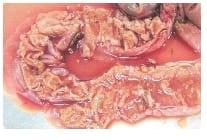
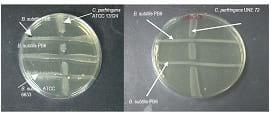
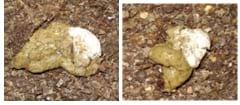
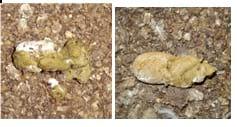














.jpg&w=3840&q=75)